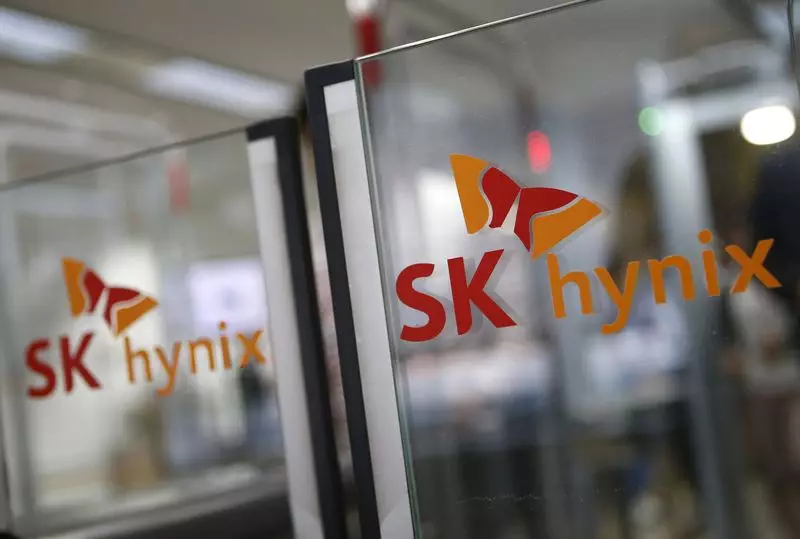The semiconductor industry is experiencing rapid transformations, especially in the wake of increasing demand for high-performance chips that power generative artificial intelligence (AI). South Korea’s SK Hynix is a prominent player in this domain, having recently reported a record quarterly profit that surprisingly outpaced its larger competitor, Samsung. However, the company faces a double-edged sword as it navigates through the complexities of market fluctuations and strategic positioning.
In a landscape where artificial intelligence technologies are proliferating, SK Hynix has positioned itself as a key supplier of semiconductors to industry titan Nvidia. This strategic partnership has allowed SK Hynix to forecast a remarkable doubling of sales for its high-end chips specifically designed for AI applications within the year. The company reported a staggering operating profit of 8.1 trillion won (approximately $5.64 billion) in the last quarter—a figure that not only surpassed expectations but also marked a significant milestone, as it was the first time SK Hynix’s profit exceeded Samsung’s for a quarter.
Historically, revenue derived from high-bandwidth memory (HBM) chips has been pivotal for SK Hynix, contributing to a striking 40% of its total DRAM revenue. This segment’s performance is emblematic of a broader trend as businesses increasingly lean towards advanced memory solutions to support the resource-intensive nature of AI technologies.
Despite these impressive gains, SK Hynix’s stock faced a notable decline of 3% following the earnings report. The cause—concerns surrounding the legacy memory chip market—has raised alarms among investors. Commodity memory chips, commonly used in smartphones and PCs, are witnessing a demand downturn. Economic uncertainties, coupled with mounting competition from Chinese manufacturers, have led to cautious forecasts for these segments. This contrast between the thriving AI-driven market and the declining commodity sector presents a complex scenario for the semiconductor giant.
The company’s Chief Financial Officer, Kim Woo-hyun, outlined the challenges posed by not just trade protectionism but also deeper geopolitical risks that have created an unpredictable environment for memory chip supply and demand. Competitors’ efforts to enhance their market share in commodity memory segments only add to SK Hynix’s concerns for the current fiscal year.
Analysts have tempered their projections for SK Hynix’s performance in the coming quarter. With expectations adjusted downward from an operating profit of 6 trillion won to approximately 5.5 trillion won, the prevailing sentiment leans towards cautious optimism. A noteworthy factor influencing this outlook is the anticipated decline of DRAM and NAND flash memory chip shipments by 10% to 20% in the first quarter compared to the previous quarter.
Despite such caution, the allure of AI remains a focal point for SK Hynix. The company’s investments in HBM production reveal its intention to capitalize on the long-term demand for such chips. While noting a conservative capital expenditure plan for fiscal-year 2025, the emphasis will remain on enhancing HBM production capabilities and establishing new facilities in South Korea. This strategic focus could potentially safeguard the company from the adverse impacts of declining demand for legacy memory products.
A notable aspect of SK Hynix’s strategy involves planning and negotiation for future supplies of HBM chips. The company’s executive team has initiated discussions regarding supply for 2026, reflecting confidence in the future demand for these advanced products amid expectations for continued growth in the AI sector. The anticipated roll-out of advanced HBM4 chips in late 2026 could further solidify SK Hynix’s position in the market, especially given that U.S. restrictions appear to hinder the capabilities of Chinese rivals in developing advanced chips.
While SK Hynix has achieved commendable successes fueled by the burgeoning AI market, it must tread carefully amidst declining demand in the legacy semiconductor sector. The company’s future hinges not just on the growth of high-performance applications but also on its ability to navigate a landscape plagued by economic uncertainty and competition. As it innovates and adapts, the path ahead could prove to be both challenging and rewarding.

